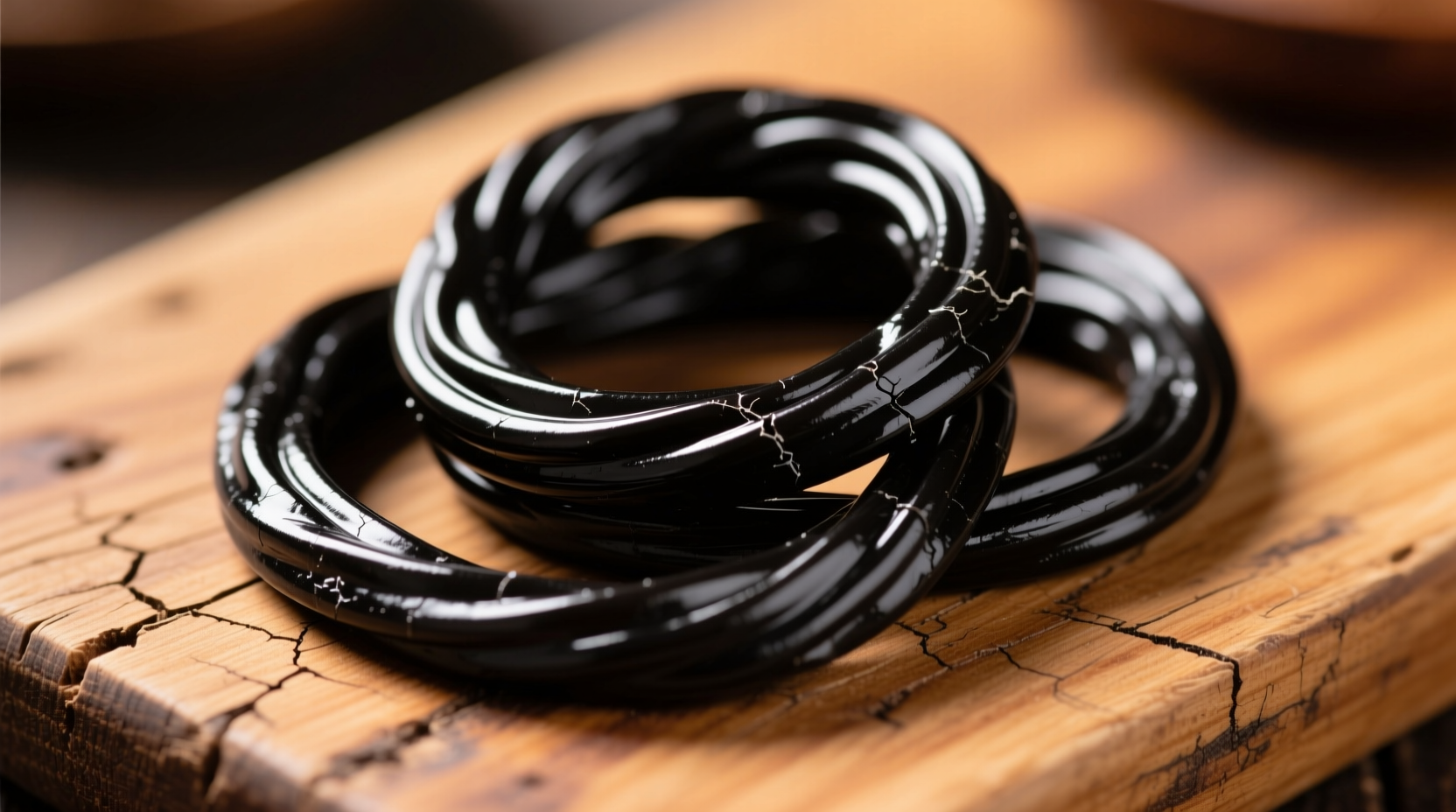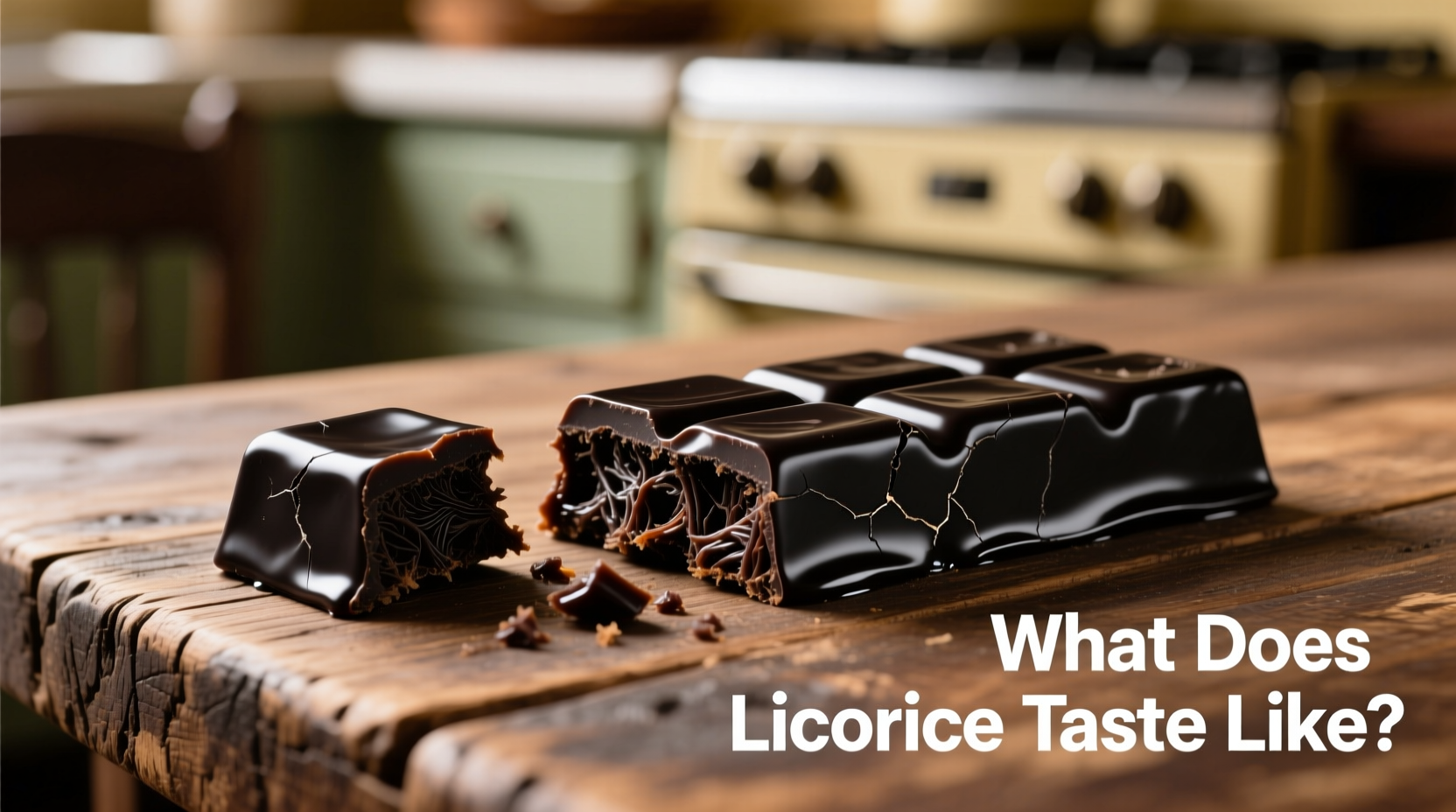If you've ever wondered what does licorice taste like but hesitated to try it, you're not alone. This polarizing flavor has passionate devotees and equally passionate detractors. Understanding exactly what to expect can help you decide whether to give it a chance or avoid it completely.
The Science Behind Licorice's Unique Flavor Profile
Real licorice derives its distinctive taste from glycyrrhizin, a compound found in the root of the Glycyrrhiza glabra plant. This natural sweetener is 30-50 times sweeter than sugar but with a complex flavor journey:
- Initial impression: Intense sweetness reminiscent of anise or fennel
- Middle notes: Earthy, woody undertones with subtle medicinal qualities
- Aftertaste: Salty, slightly bitter finish that lingers on the palate
According to research published in the Journal of Agricultural and Food Chemistry, glycyrrhizin activates both sweet and bitter taste receptors simultaneously, explaining why some people experience licorice as predominantly sweet while others perceive overwhelming bitterness. This genetic variation in TAS2R38 receptors affects approximately 1 in 5 people—making licorice one of the most genetically divisive flavors.

Real Licorice vs. Licorice-Flavored Products: A Critical Distinction
Most Americans have never actually tasted real licorice. What's commonly sold as "licorice" in the US typically contains anise oil rather than genuine licorice root extract. This crucial difference explains why European visitors often express confusion when trying American "licorice" candies.
| Characteristic | Real Licorice (European) | Licorice-Flavored (American) |
|---|---|---|
| Primary Flavor Compound | Glycyrrhizin (from licorice root) | Anethole (from anise) |
| Sweetness Level | Moderate with bitter aftertaste | Consistently sweet |
| Aftertaste | Distinctly salty/bitter | Clean, sweet finish |
| Texture | Chewy with fibrous quality | Smooth, uniform chew |
Why Licorice Creates Such Strong Reactions
The extreme polarization around licorice taste isn't just preference—it's biochemical. A 2022 study from the Monell Chemical Senses Center revealed that people with certain genetic markers perceive glycyrrhizin as intensely bitter at concentrations where others detect only sweetness. This explains why:
- Northern Europeans typically enjoy salty licorice (salmiakki) while Americans often find it unpalatable
- Some people describe licorice as "tasting like medicine" while others compare it to sophisticated gourmet candy
- Cultural exposure plays a significant role in developing a taste for licorice
Interestingly, the European Food Safety Authority notes that genuine licorice consumption should be limited to 100mg of glycyrrhizin daily for most adults, explaining why traditional licorice candies contain regulated amounts of the active compound.
Describing Licorice to First-Time Tasters
If you've never experienced licorice, imagine this flavor progression:
- First contact: Immediate sweet sensation similar to anise or star anise
- 3-5 seconds in: Earthy, woody notes emerge with subtle tobacco-like qualities
- 10 seconds in: Salty undertones develop, particularly in European varieties
- After swallowing: Lingering bittersweet aftertaste that can last several minutes
Food scientists at UC Davis describe authentic licorice as having "a flavor arc that evolves over time, unlike most candies that deliver a single-note sweetness." This complexity makes it particularly challenging to describe using conventional flavor references.
Common Misconceptions About Licorice Flavor
Several persistent myths cloud understanding of licorice's true taste:
- Myth: All black candy is licorice
Reality: Most black candies in America use anise oil, not actual licorice root - Myth: Licorice tastes like root beer
Reality: Traditional root beer uses sassafras, not licorice, though some modern versions include both - Myth: Licorice is always sweet
Reality: Authentic licorice has a complex profile with significant bitter and salty components
When exploring licorice for the first time, start with small amounts of authentic European licorice to experience the genuine flavor profile before deciding whether you enjoy what does licorice taste like in its purest form.











 浙公网安备
33010002000092号
浙公网安备
33010002000092号 浙B2-20120091-4
浙B2-20120091-4